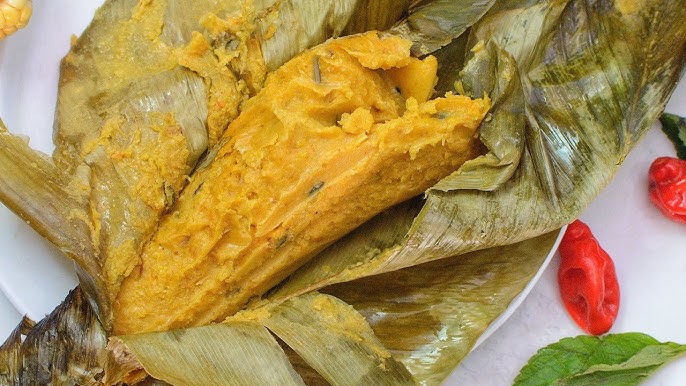A common nerve disorder that causes numbness, tingling, and sometimes finger and hand pain is carpal tunnel syndrome. Doctors do not suggest substituting complementary measures for conventional treatment.
Carpal tunnel syndrome (CTS) varies from severe to mild. Appropriate therapy can also restore function and alleviate symptoms in the hand and wrist.
The carpal tunnel on the palm side of the wrist is a narrow passageway which runs from the wrist to the hand. Its structure is composed of bones, ligaments and tendons. A nerve called the median nerve passes through the tunnel.
The median nerve, originating near the neck and shoulder and flowing down to the side, runs from a network of nerves. The median nerve provides sensation to the thumb, index finger, middle finger, and the thumb side of the ring finger.
CTS causes the hand or arm to feel tingling, numbness, thumb stiffness, and dull pain. Due to pinching and compression on the median nerve, this happens.
The disease exists in between 4 and 10 million individuals in the United States. Surgery may be needed for serious CTS.
However, we look at the potential solutions for supporting and calming the symptoms of carpal tunnel syndrome at home in this post.
10 lifestyle measures

Some relief for mild to moderate CTS symptoms can be offered by the following lifestyle and home remedies, but little clinical evidence supports using them instead of conventional treatments.
Always seek advice from a doctor.
Some medical professionals suggest:
- avoiding repetitive hand and wrist movements, where possible
- paying attention to the hands and wrists and stopping activities on feeling pain, discomfort, or numbness
- taking frequent breaks if activities that involve repetitive hand movements are unavoidable
- trying to keep the wrist in a neutral position without extending the wrist too far up or flexing it too far down
- using the largest joints possible when lifting, such as the shoulder, to avoid extra stress on the wrists, hands, and fingers
- not holding objects in the same way for too long
- avoiding power tools that vibrate, such as jackhammers and floor sanders
- adapting the workplace to keep a neutral wrist position
- relaxing the grip or level of force during activities the involve the hands, such as writing
- trying not to sleep on the hands or with the wrists in bent positions
Some evidence suggests that regular physical activity and workouts can help protect against mild CTS, especially involving the hands.
However without management, CTS normally does not work out, and without medical attention, it can get worse. It is important to see a doctor if he has constant numbness or weakness in his hand.
10 home remedies
The following home remedies may help relieve CTS:
- resting the affected hand and wrist for at least 2 weeks
- using anti-vibration products with vibrating tools
- wearing a wrist splint or brace to rest the median nerve
- doing gentle hand, finger, and wrist-stretching exercises
- massaging the wrists, palms, and backs of the hands
- wearing work gloves to protect the hands and wrists
- applying heat to the wrist to help reduce pain
- wearing an ice pack, which may also help to lessen swelling
- adding extra material to tool and utensil handles for a more comfortable grip
- taking over-the-counter (OTC) pain medication, such as ibuprofen or naproxen
People who pursue OTC drugs should be mindful that studies have shown that individuals with CTS symptoms do not offer complete relief. They can also raise the risk of issues with the gut and bleeding.
Alternative therapies

Some alternative treatments may help improve the symptoms of CTS, the Mayo Clinic suggests.
Some studies have also recommended that short-term relief can be provided by the following techniques:
- Yoga stretching and strengthening exercises may reduce pain and improve grip.
- Hand therapy techniques used in physical and occupational therapy may relieve symptoms.
- Ultrasound therapy raises the temperature of the affected area, potentially reducing pain and promoting recovery.
- Applying topical anti-inflammatory medications as well as ultrasound may also be helpful.
- Laser therapy might improve symptoms according to limited evidence.
In some individuals, chiropractic treatment can reduce symptoms. Some individuals may also benefit from acupuncture and relieve their symptoms. Additional research is being recommended by the American Academy of Orthopaedic Surgeons.
Before using any complementary or alternative therapy, people should always consult with their physicians. Medical practitioners should not advocate substituting unproven therapies for conventional treatments.
Drug treatment and surgery
Prescription medications or injections are available in addition to wearing splints and other comfort measures.
Medication of oral corticosteroids can decrease inflammation and swelling, which may help to lower the median nerve pressure. Also available as an injection into the wrist is corticosteroid medicine. Injections tend to be more effective for CTS than oral corticosteroids.
The use of non-steroidal anti-inflammatory drugs (NSAIDs) to treat CTS is not confirmed by any significant evidence.
Under the supervision of a physician, traditional therapies for CTS should take place.
Try to manage the condition if CTS relates to an underlying condition, such as diabetes, arthritis, or hypothyroidism, and the symptoms should decrease.
For people who develop CTS during pregnancy, 6 to 12 weeks after giving birth, symptoms typically resolve. When sleeping, some clinicians suggest putting a splint on the wrist.
Sometimes, if there is extreme compression on the median nerve, nerve damage or muscle wasting can be developed, requiring further treatment.
If CTS is serious and if non-surgical treatments do not work, the treating physician can suggest surgery. CTS surgical treatment does seem to have the best results. Studies have shown that CTS benefits more than it does with only a splint or any other non-surgical procedure 6 to 12 months after surgery.
The cutting of the ligament that presses on the median nerve requires CTS surgery. The ligament slowly re-grows after surgery, leaving more space for the nerve.
For CTS, the two types of surgery available are:
- Open surgery: The surgeon makes a single incision over the palm side of the wrist. They will then make a cut through the ligament to release the pressure on the nerve.
- Endoscopic surgery: The surgeon passes an endoscope, a small scope-like device with a tiny, attached camera, through small incisions in the wrist area to cut the ligament.
In the days or weeks following endoscopic surgery, a person might experience less pain than a person who has just had open surgery. However, between the two methods, no long-term differences are noticeable.
Until healing is complete, avoid behaviors that could place a strain on the wrist after surgery. It can take a couple of weeks to several months to recover.
To recover from CTS or after CTS surgery, some individuals will need to change jobs or to alter occupational duties. A return of CTS is uncommon with proper care, and most individuals recover fully.
Takeaway
Although in mild or even moderate presentations, certain exercises, stretches and certain lifestyle changes may help relieve pressure and strain on the wrist, none of them are a proven replacement for medical treatment when considering carpal tunnel syndrome.
In individuals with severe symptoms, these steps, especially resting the hand, can certainly help following surgery.
However if the palm side of the wrist is suffering from constant discomfort, numbness and tingling, seek medical attention.






